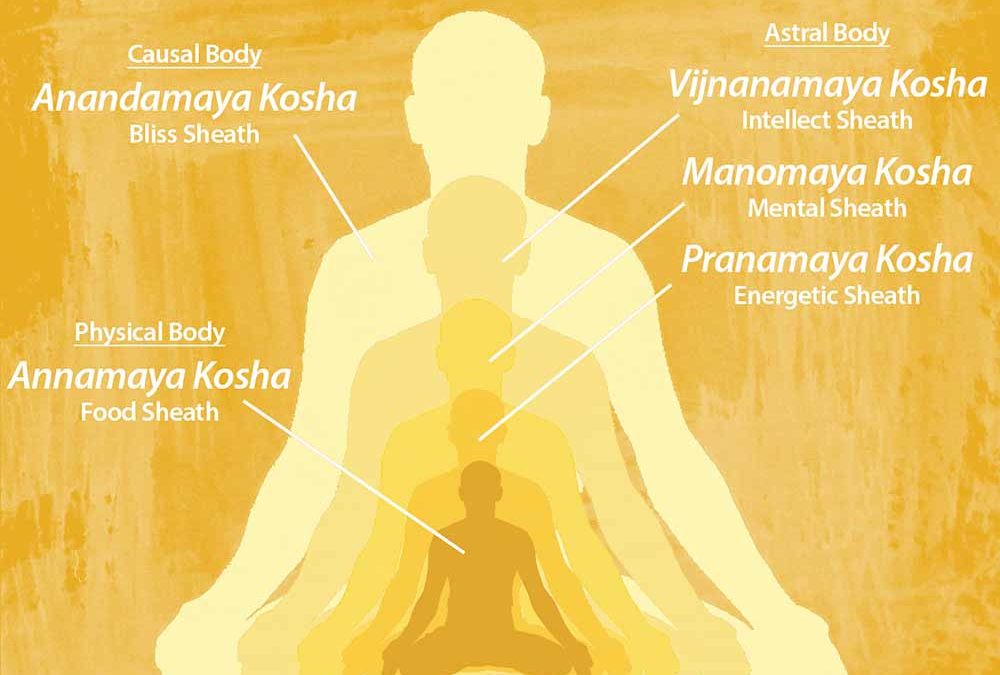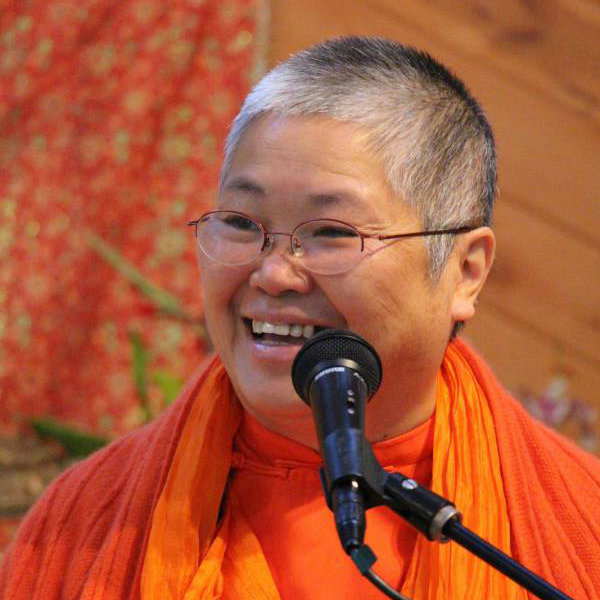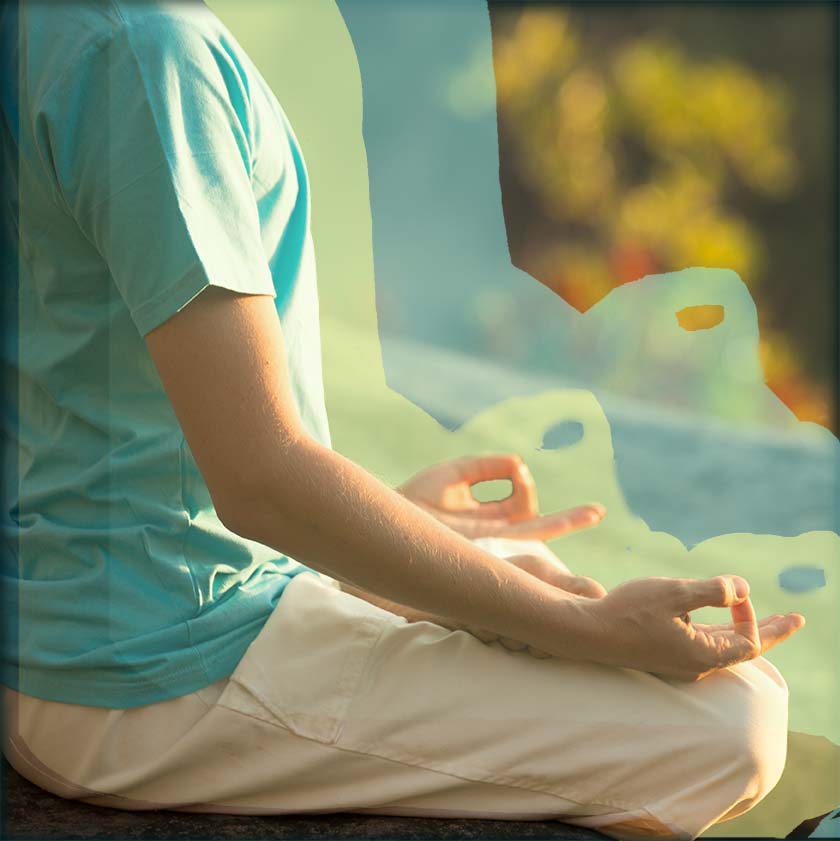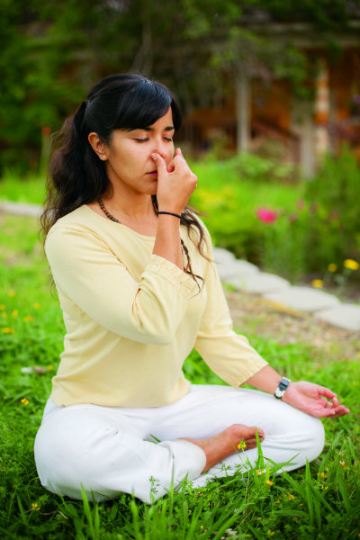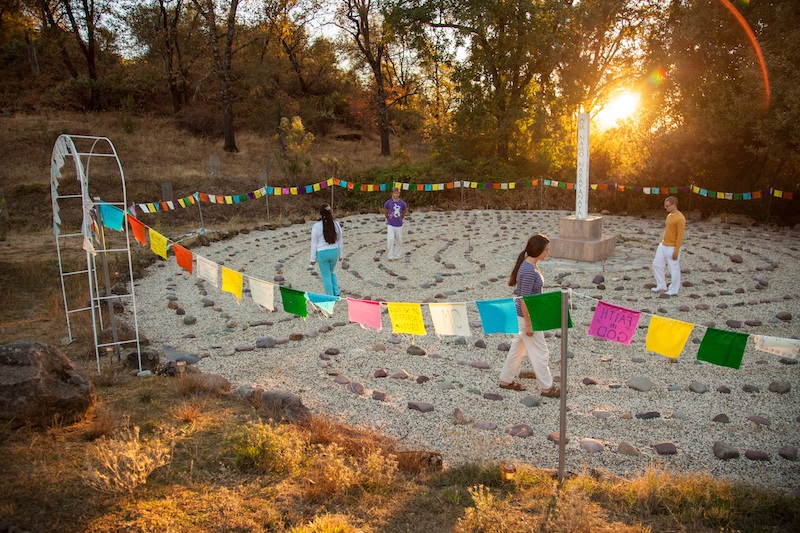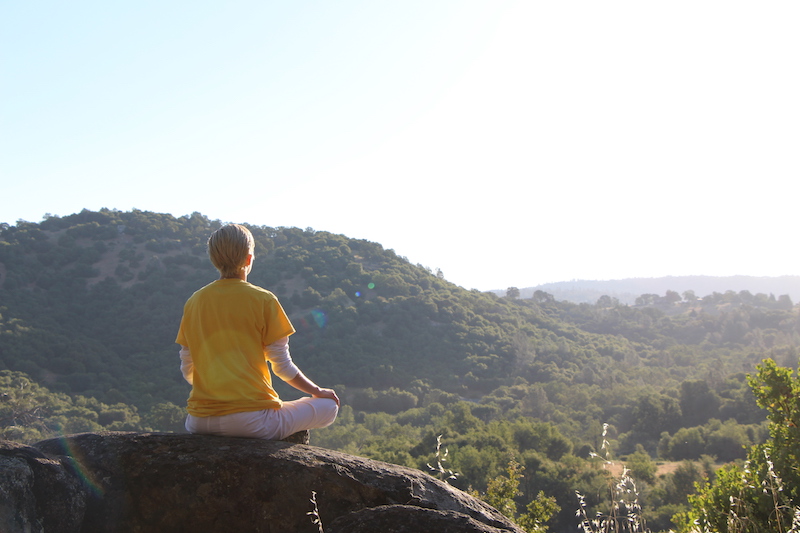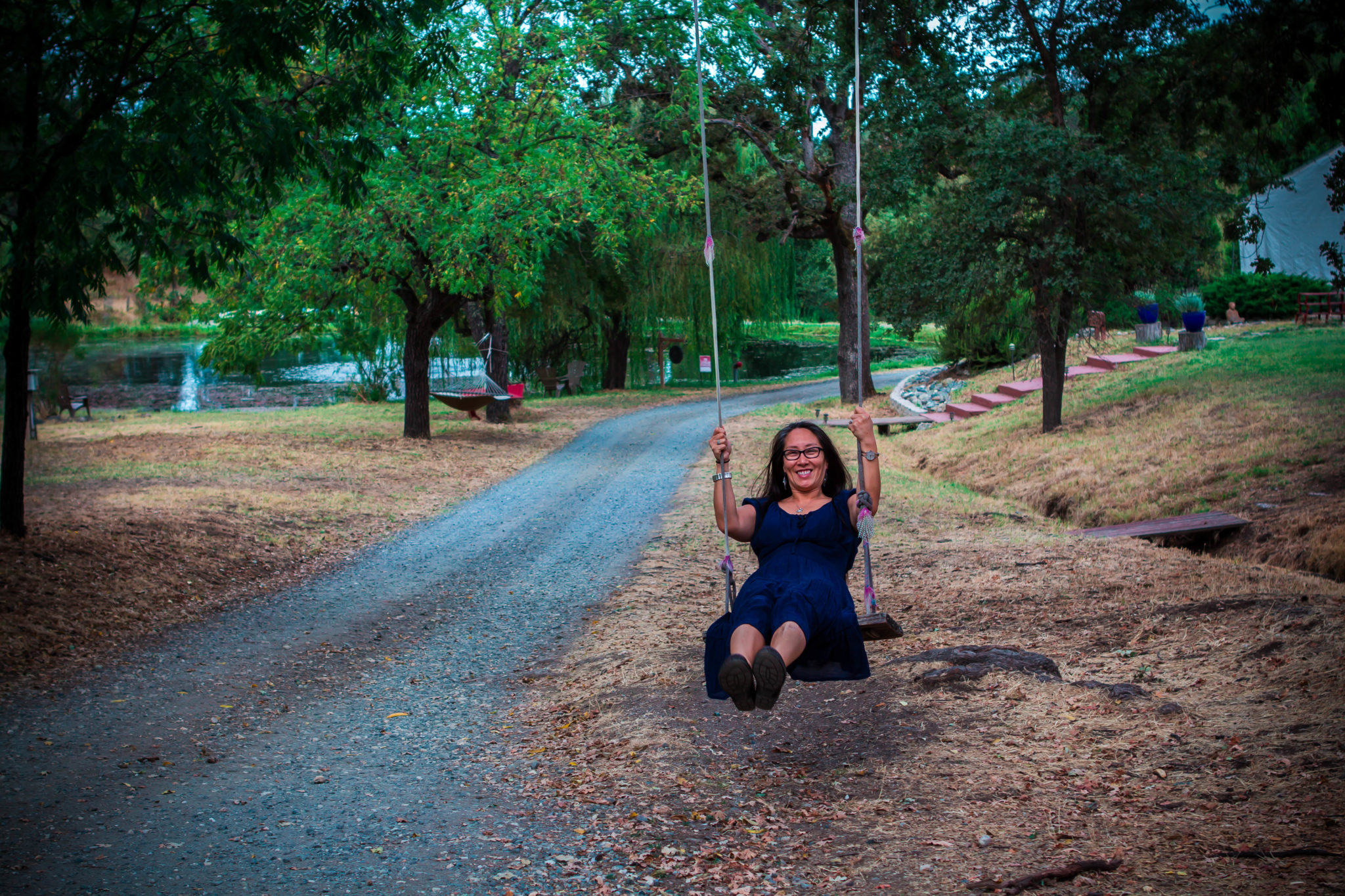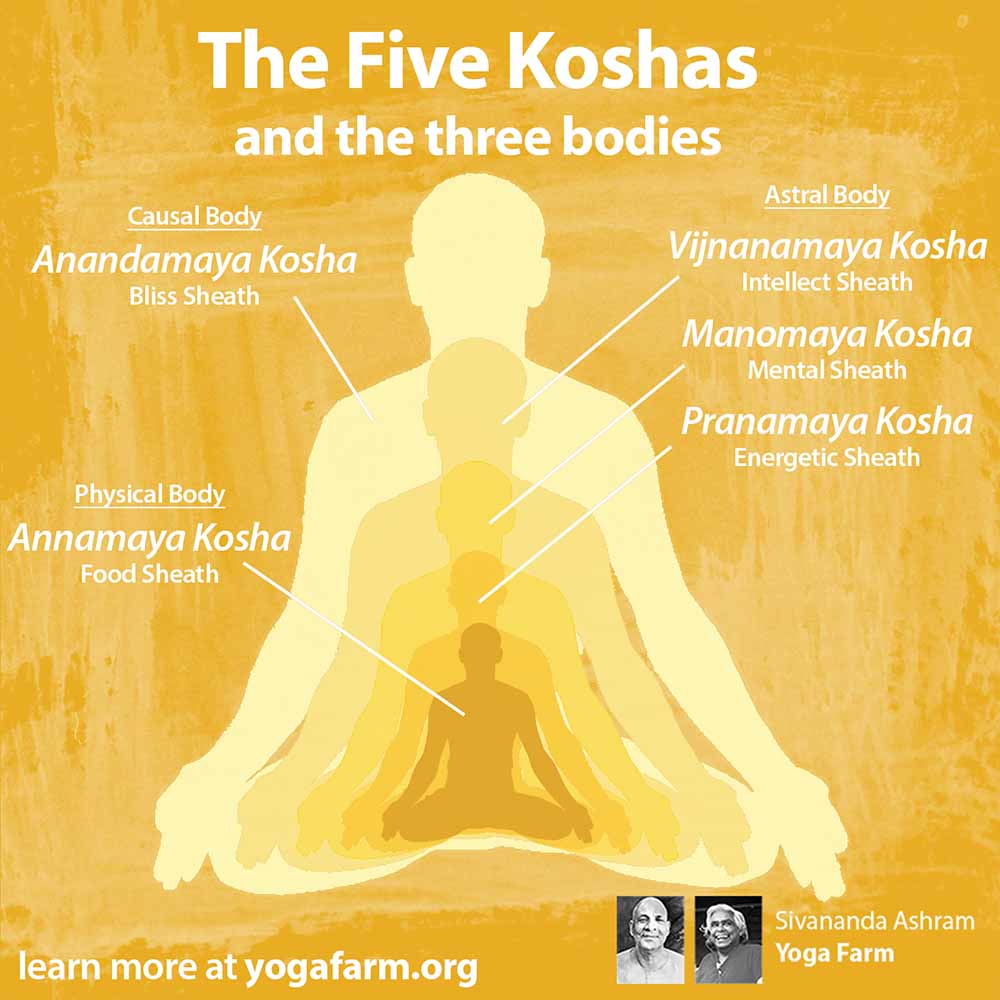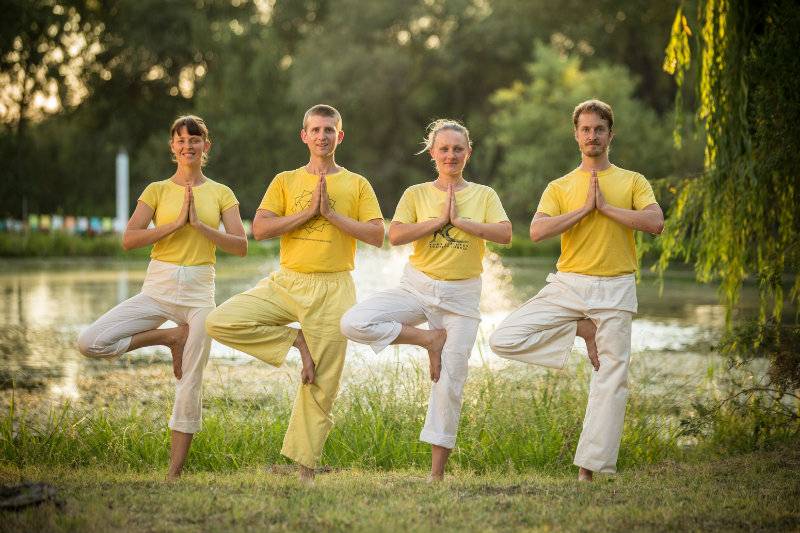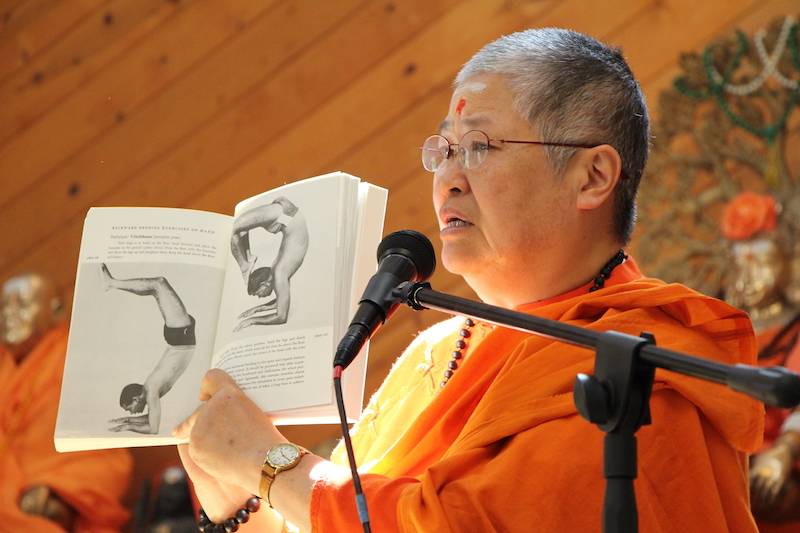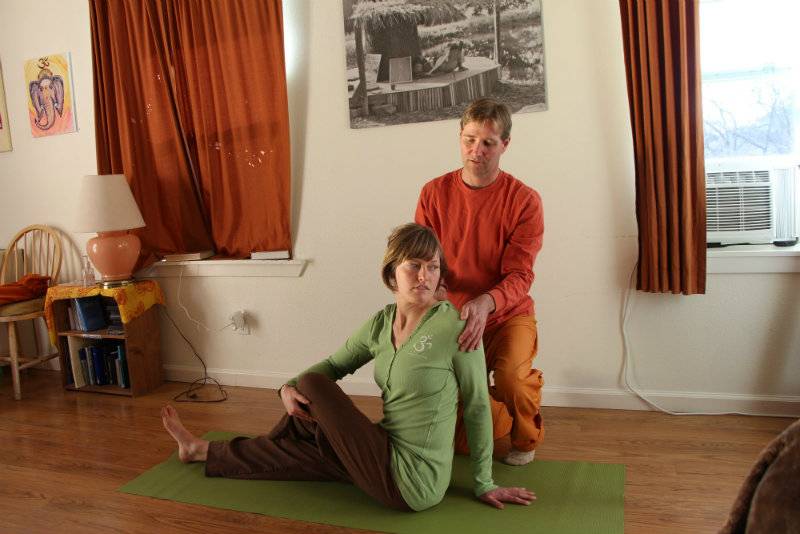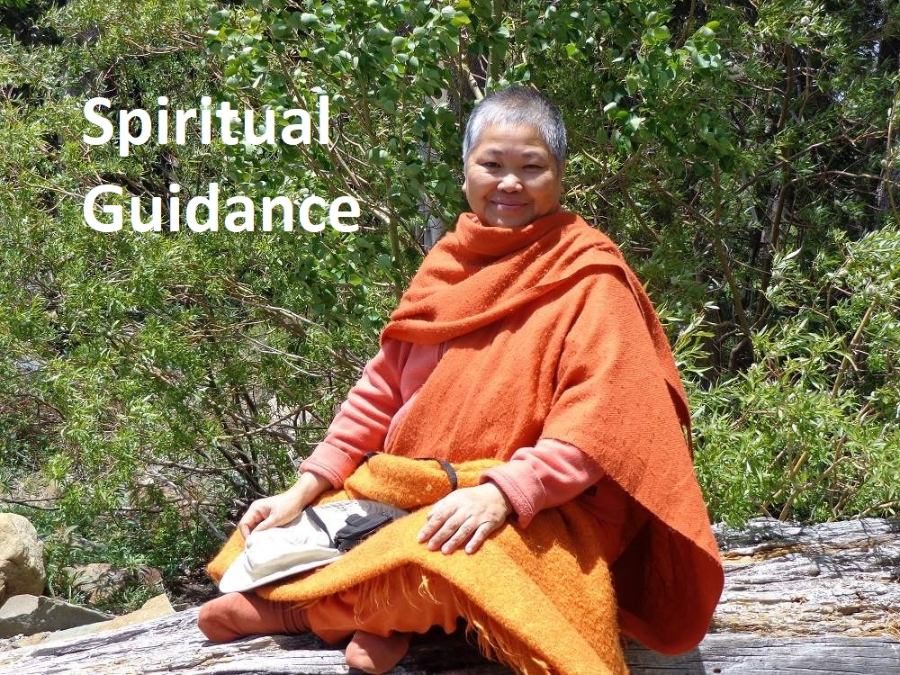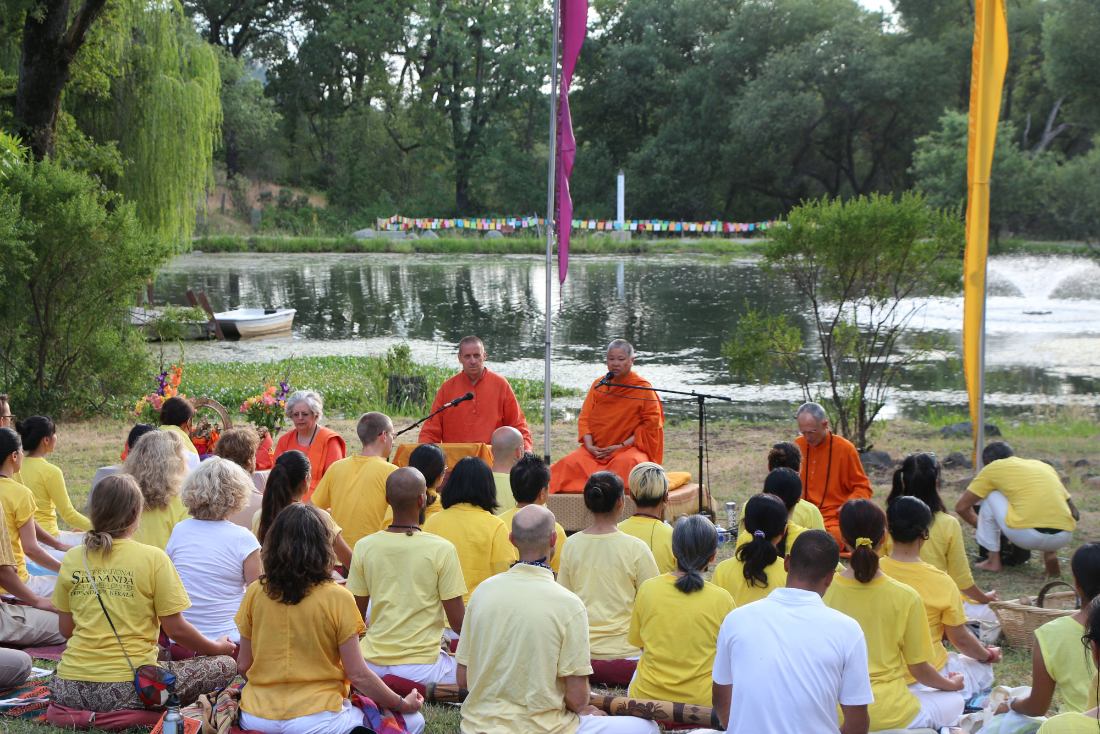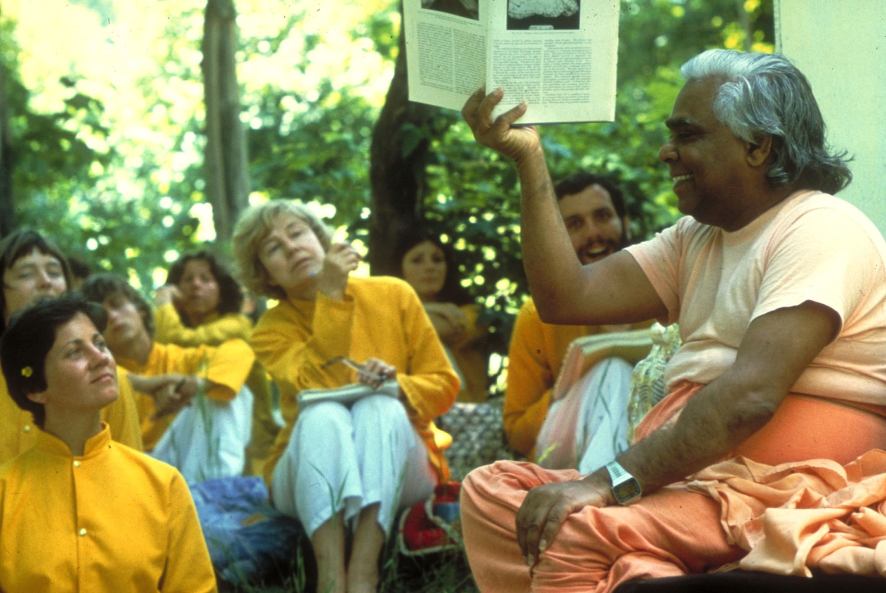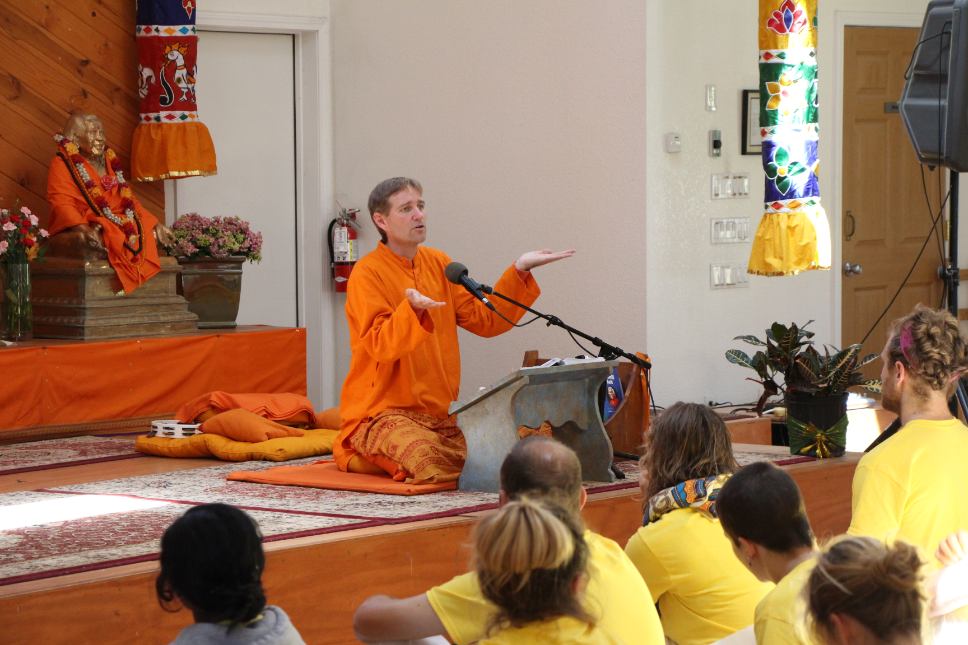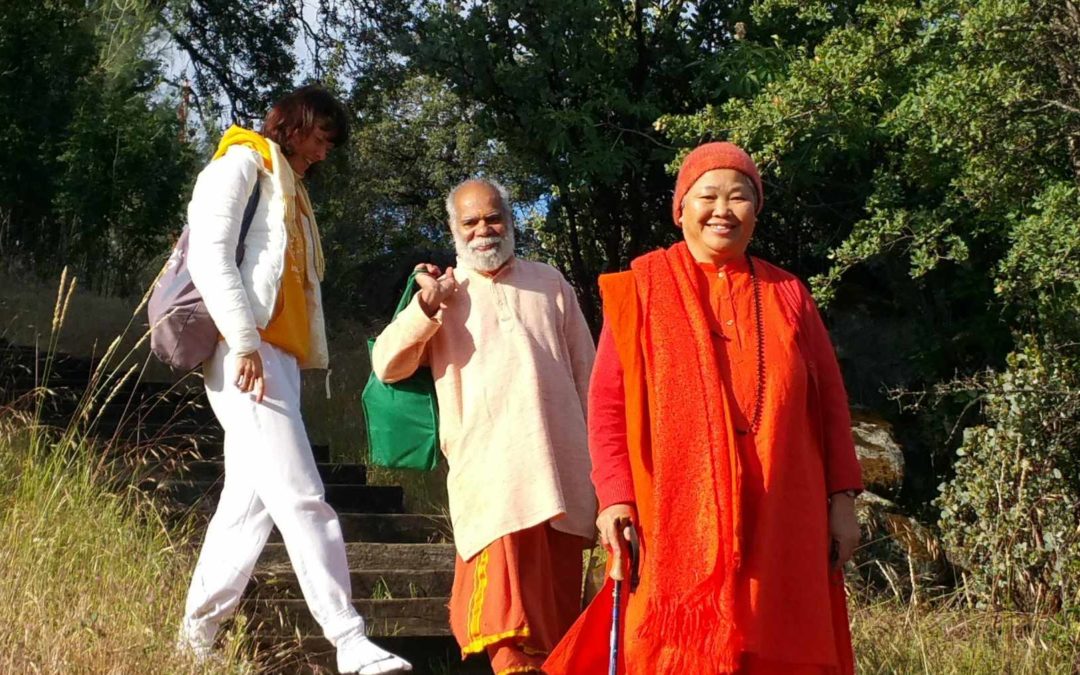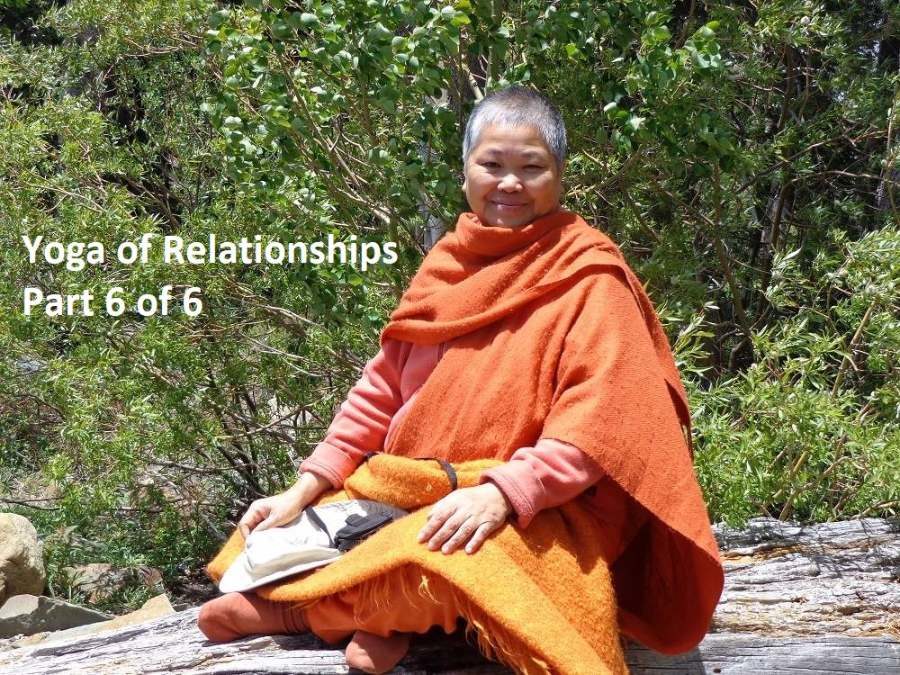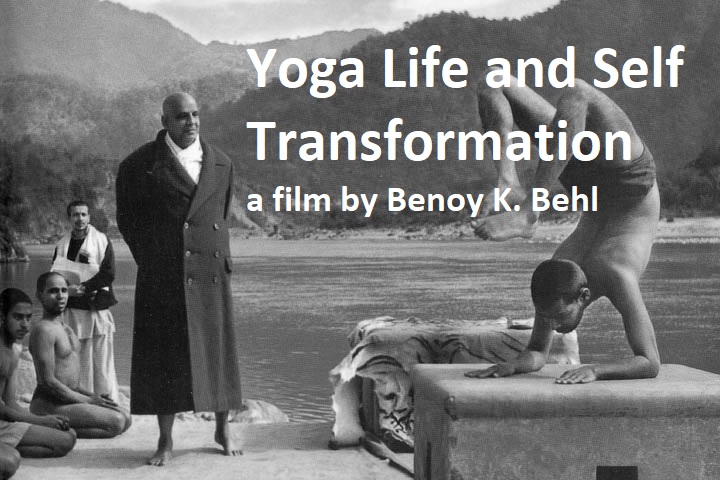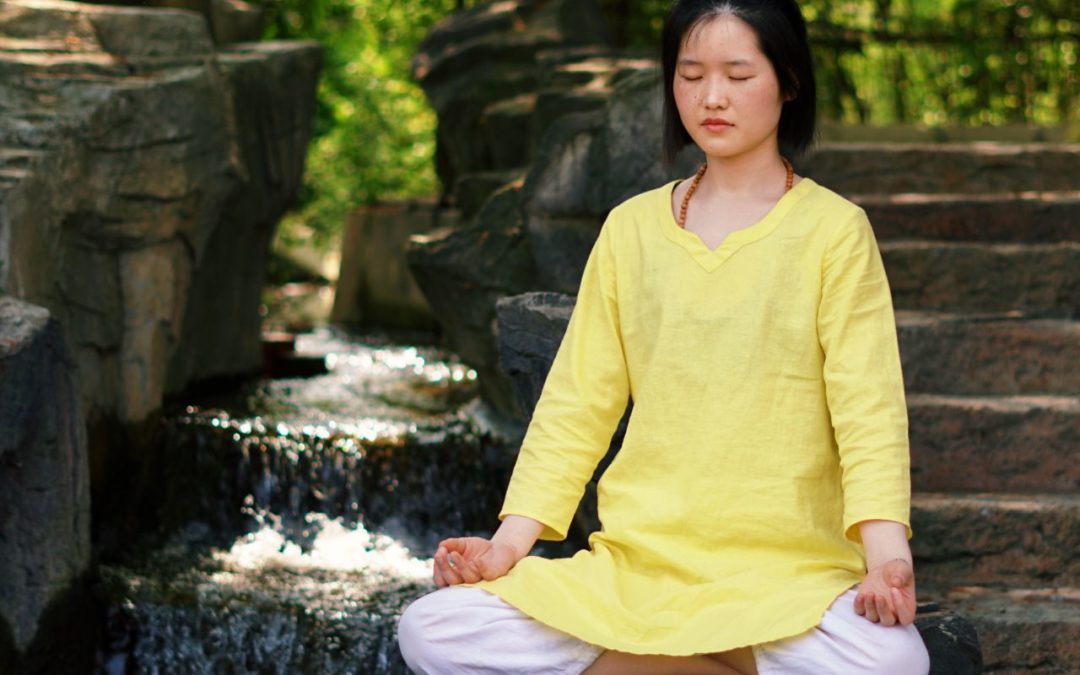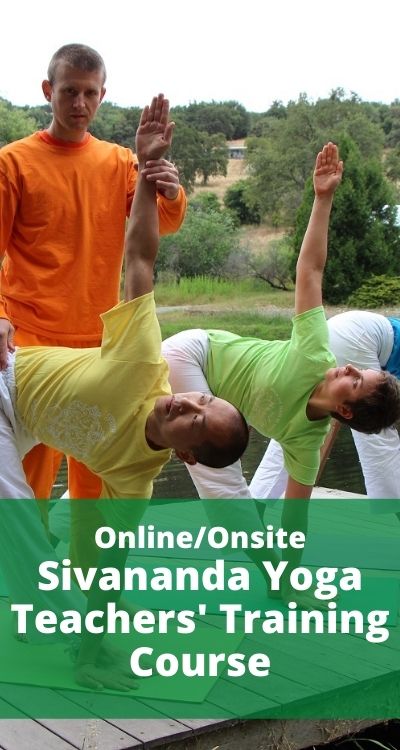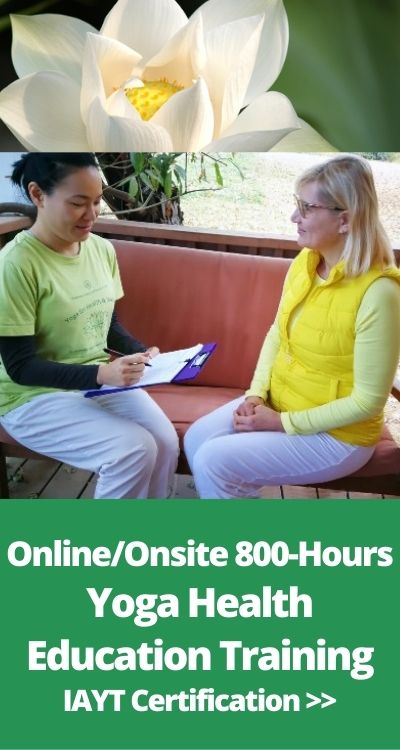Introduction
It is believed that our true state is that of “sukha”, or eternal bliss. The purpose of Yoga is to free us from our turmoil and confusion. To liberate us from the shackles of our innumerable desires, which lead us nowhere at all. To awaken true knowledge within us. To help us to be in harmony, to be united with all that there is.
Real Meaning of Yoga
Sometimes we get mixed up and we don’t understand, we think Yoga is exercise, or sometimes we think it’s rituals, and sometimes we think it’s a religion, but in fact Yoga is a system of, we say of self-development, what that means, a system to control the mind in order for us to grow and rise in consciousness and in understanding of our true nature.
What’s happened in the western world is that we have been very good at pursuing the outer, material media based world, but we have lost our connections to a great extent with the inner world of consciousness and direct perception, so the great Yogis realized that the Yoga could be a great gift to the West.
Spiritual Path
So the spiritual path is a path of transformation from emotion to devotion, from egoism to selflessness, from restlessness to peace and contentment, and from ignorance to knowledge.
Veda is the knowledge and Yoga is the practice so yoga is woven in all the Vedic deities, mantras, rishis, practices and rituals. And we say that Yoga is the inner sacrifice, the inner ritual, which is offering of the inner divine forces, speech, mind and prana.
Today’s World
In the world today we have reached a stage of tremendous fragmentation, our language, our science is running after the particularized, we’ve reduced the human health to very complex chemicals, the question is how do we integrate our perception, how do we integrate our knowledge and how do we arrive at a holistic, totalistic understanding of who we are as individuals, of what the human being is, the nature of the universe, the nature of life,
Yoga as an Inner Path
And this is where Yoga comes in, because Yoga provides us an inner technology of the spirit, an inner technology of consciousness, an inner science of understanding ourselves so that we can directly perceive, and directly perceive who we are and what is the nature of reality behind all the glitter of appearances, whether through our senses or whether through the mass media.
Yoga takes us to awareness. True self-awareness. In Yoga you calm yourself. You see that you are less affected by the noise and turmoil of the outside world around you. We lead our lives controlled moment to moment by our bodies, by our emotions and by our minds. We do not really know what we are doing or why we are doing it. Yoga brings us to the moment in which we live. Gradually we become aware, first of our bodies and our breath. Yoga brings us to look at it, to control it. In that, the transformation has begun, we are becoming aware of ourselves.
Yoga and the Mind
From there we go to an awareness of the mind. Yoga and ancient Indian thought do not consider the mind to be consciousness itself. The mind is in many ways like our body. We have to see it, we have to be aware of it. Ancient texts point out that the mind is like a monkey which jumps about. It flits from thought to thought and we usually have no control over it. In Yoga we become aware of it. We step aside to become an observer. We see what the mind is doing. We are no longer carried away by the fluctuations of the mind.
Sivananda Yoga of Swami Vishnudevananda
The Sivananda organization of Swami Vishnudevananda is one of the best, if not the best as far as my opinion goes, Yoga groups in the world, particularly in the Western world because they teach the classical and integral tradition of Yoga, including Hatha Yoga, Raja Yoga, Vedanta, and even the importance of devotion, rituals, Ayurveda, even the Jyotish or the Vedic astrology. They provide also a teaching in an ashram, Karma Yoga setting, where there is the emphasis on selflessness and inner giving, Yoga as a sadhana and not simply Yoga as an exercise or Yoga as a business.
Four Paths of Yoga
Sivananda Yoga is a tradition that basically incorporates four paths of Yoga, it’s like synthesis of four paths of Yoga, it’s Karma Yoga which means selfless service to all human beings and all everything, all living beings basically. Then it’s Raja Yoga, it’s control of the mind, Hatha Yoga and Pranayama practice are part of Raja Yoga, then its Bhakti Yoga, it’s Yoga of devotion, that’s why we sing Bhajans here, that’s why we have altar and we have “murtis” and we express our devotion in this way. And also it’s Jnana Yoga, it’s the Yoga of knowledge, which is Advaita Vedanta, and this knowledge comes from Sankaracharya, it’s an ancient Saint, and our lineage, Sivananda lineage, it’s also one of the orders that Sankaracharya founded.
Five Points of Yoga
Swami Vishnudevananda created the five points of Yoga Life and based his teachings on this simple summary.
These five points of Yoga Life are discipline, proper exercises, asanas, proper breathing, pranayama, proper relaxation, savasana, proper diet, vegetarian food, positive thinking and meditation, Dhyana and Vedanta.
Yoga Foundations
A lot of people practice Yoga, but they jump over the foundation of Yoga which is the two main practices of yama and niyama, what that means, it is the prescription of the yogis of things not to do, and things to do, that means the restrictions and the observances.
It’s interesting to note that classical Yoga never began with the asana, classical Yoga began first of all with yamas and niyamas which are the dharmic values of living in harmony with the universe, and the dharmic attitudes of having respect, honoring, being aware of the interconnectedness, the sacred nature of all life. So the asana is actually a means of helping us relax out of body consciousness, relax out of identification with ourselves with the body and being able to then open up with the greater currents of the eternal life and to create within us down to a physical level a place of peace, stillness and silence so that we can ground and hold a deeper perception.
Our True State of Being
Hatred, violence, greed, these are things that tend to crop up in human interactions, and you could say its natural in a sense because we are under the impression that we have to get for ourselves, and we want to be happy, and so following those impulses of self-preservation and seeking enjoyment and happiness we tend to become greedy and we tend to become violent and angry and many negative qualities come out, but I don’t think that these things are our natural state, meaning I think that if we can settle down into out true natural state we see that we would really rather be free from these negative qualities. I think our true natural state would be where we are completely at ease, completely peaceful.
Love for Love’s Sake
My journey started 20 years ago at a stressful time in my life, and I had the idea that yoga would bring me some peace, but I did not realize how deep that peace would be, to start to feel that in your heart, that its love for the sake of love not specifically about a certain person or place, that deep love is so fulfilling, so beautiful and every day makes every day beautiful. You can access that peace at any moment, and that you can live in that peace, for more and more of your life, more and more time.
Testimonials on How Yoga Heals
Before I found Yoga I was in the Marine corps for four years, 2004 to 2008, I spent 3 of those four years overseas, thirteen months of those in Iraq. In the marine corps or in the military you are trained to live in the, I guess the sympathetic nervous state where you are constantly on call, however though that must come to an end, and they do not teach you how to undo that wiring, you know you are wired, but after the traumatic experience of Iraq I just was not able to handle alcohol any more, but I didn’t know anything else, by then it was a deep rooted “samskara” and I just kept falling into the trap of alcohol It was a very tough battle.
Because alcohol poisons the body and mind, and it leaves you in a state where the only solution that you can see is more alcohol which is obviously the worst thing that you can do. I use Yoga to safely safeguard my addiction and to understand and embrace my addiction, but at the same time, to remove the veil of that I’m a victim of my addiction and that I can’t do or live a certain life, yoga has freed my bondage to the addiction, you are not tied to a pill, you are not running to a cabinet, you are not getting on the phone to a doctor, you are nor freaking out because you can’t find a certain physical item that you are using to aid yourself in relieving any pain or suffering that you may perceive, and be having at that time.
It is certainly a journey, it’s a journey every day, it is the process of accepting every moment as perfection and trying to find peace amidst a very unpeaceful mind.
Ego Satisfaction
The modern world is trying to follow through on the promise of ego satisfaction, all the way down the line, as far as it can possibly go, still hoping that at the end of this road there will be some final and perfect payoff, that if we continue to upgrade our phones, and continue to have higher definition video quality, and continue to have more and more convenient and delicious foods, whether they are nutritious or not, that somehow at the end of the day all of this sensory experience will lead to a lasting state of satisfaction, and we just haven’t figured out how to stop, or when to stop, or how to look in a different direction, and this is entirely the promise of yoga practice.
Bringing Mind to Stillness
When you do asanas your mind becomes focused, and when mind becomes focused it becomes still, and when mind is still there is no desire in it and when there is no desire you attain happiness. It’s all about mind, and controlling the mind. It’s very hard when your mind is running like a wild horse, unwilling to follow any discipline, and it’s very tough to gently rule, to gently take over it and make it listen to you, to make it follow what you would like it to do.
Yoga and the Breath
Yoga beautifully brings people back into their bodies, and it’s to that aspect of Yoga I really attribute its stunning success in the last 20 years. It also provides people a connection with the breath, and the breath has an amazing capacity to bring healing. Swami Vishnudevananda came and shared a life and shared a way of life not defined by one ideology or another ideology, but suggesting to people that they can find happiness within, that they can find calm within, that through the stabilization of the mind the world can be made a wonderful place. That this interiority was a message very much needed.
One of the great blights of contemporary society is a sense of purposelessness, what is this human life in terms of purpose, and with our consumer society, which can be quite glamorous, we can feel fulfilment if we have this style, and what yoga does is it says step it down, go back to the essentials, go back to your breath, go back to your body, because whether you are wearing yoga pants or whether you are wearing a sarong, or whether you are wearing a three piece suit, you are breathing, your body is there,
Feeling of Connection
Your subjectivity creates this relationship with the world, and that rather than seeing the world as something without meaning, rather than seeing the world as simply something to be defined through our consumer choices, if we can feel and recover that sense of intimacy between self and world, then we’ll have a sense of purpose. Now that means that each individual is given an opportunity, whether collecting garbage, whether washing the dishes in the kitchen, whether driving whatever automobile, that person is given the responsibility of being accountable to immediacy, and finding a path, finding a way to see purpose, to see meaning in the most simple and in the most everyday. All dharma is to be found in every single job, and if we can recall that sense of purpose then we are going to move out of states of alienation and into states of interconnectivity.
Testimonial
I spent six years in the United States Marine Corps, as an infantry officer in the J-Tech, went to Iraq and Afghanistan, according to the Veterans’ administration I have an 80% disability rating for post-traumatic stress disorder and traumatic brain injury. Before I came to the Yoga farm I was very angry and unhappy about my station in life, and I did not treat myself or others well.
Coming to the Yoga Farm has been an extremely rewarding experience because I’ve learned a philosophy, or I’ve started to learn a philosophy about life which gives me hope.
Years ago when I started to practice regularly I could really feel that each morning that I practice I can deal with whatever comes during the day easily, so by these practices you connect yourself to something higher, to some guidance and to some great intelligence that comes through the mind. In Israel Yoga is very popular, and I will not be surprised if in Israel we will have the largest number of teachers per population.
Yoga in Japan
A lot of need for Yoga in Japan, because in Japan after second world war spirituality or even religion is quite diminished, so many people got lost. What is the purpose of life? We feel like we are becoming machine, and we start to feel we don’t have much creativity and things, and no place express our feeling, and yoga is a way to bring us slowly back to our feet on the ground again.
Yoga in Vietnam
The Vietnamese they work very hard, the Vietnam war is just finished like 40 years ago, more than 40 years ago, and now we are try to improve our country, try to improve ourselves, and I am the first generation of the Vietnamese after the war, and we very happy, we don’t have to worry about food, about the war any more, but still, they had the idea that they had to work really hard to improve their life, to improve their children’s life, but, because they are rush and hurry, so there are a lot of stress, and they try to maintain their culture as well, and they try to adapt to new culture of new modern life. I think Yoga is very important for myself it is a way how I can find my peace, find myself, as well as I can help other people, it improves the consciousness or the peace, the happiness in myself, and try to cultivate it in other people as well.
Yoga and Iran
I came here and I did my TTC in 1983, so four days I was with him, and he advised me go back to Iran, start teaching Yoga, and now the people they need peace of mind and happiness, and the Yoga shows. So six months later I just left India and went to Iran, and started teaching the Yoga and day by day people became more interested of the Yoga, in even small city of Iran nowadays there is a Yoga center.
Testimonial – Yoga and Suffering
I am an actress from Sri Lanka, film actress, I have worked in more than 100 films. Yoga changed my life completely, when I was acting actually my entire life was in such a big pain, because as everyone knows, acting is “maya”, we always try to hide our real self behind our make-up, behind our clothing, behind our money, behind cars, everything, we are running for all those things and without trying to focus into ourselves, and find the true nature of our selves. I was like inside that “maya”, suffering so much, you will not believe that I tried to commit suicide seven times, because I couldn’t take it anymore. Then I had such a big knee problem, I even could not walk properly, and then one of my friends told me why don’t you do Yoga. When I was young I did yoga and I never knew the value of Yoga, but because of my knee pain I came here, and then within two weeks, you know, I was feeling good.
Yoga at Google
Googlers as a community embrace all the kind of things that Yoga philosophy talks about, how to take care of your body, your brain, your mind, so that you can function better and as a result bring out better products and services. For Hatha Yoga, asana practice, just at the google headquarters itself there are 37 classes a week, and then if you add all the other yoga classes that take place, asana classes that take place across all of our offices, New York, Tokyo, Beijing, Sao Paolo, it probably exceeds 100 classes or so every single week. But that is just asana practice, there is also a very popular meditation practice at Google, and it being a search company, the practice is amusingly and delightfully called “Search Inside Yourself”, and the “Search Inside Yourself” program is actually the most popular training program at Google, with a long wait-list. That juxtaposition and coming together of an ancient practice, a 1600 year-old practice, in the midst of an organization and technology and a movement that is much more recent, I find it delightful.
Testimonial – Yoga and Working Life
I used to be a flight attendant, for seven years, and it was a very glamorous lifestyle where I really enjoyed traveling to different places, meeting new people, understanding culture, experiencing the food and everything, but I always felt deep inside my heart that there was something like an essence that was missing, and Yoga definitely taught me how to be centered, like in control of myself, my feelings, I felt like coming into yoga and practicing it every day, not only the asanas but also the philosophy, its lifestyle, really helped me become grounded and understand my true nature.
Testimonial – Volunteering for the Sivananda Yoga Organization
I was previously working as a medical doctor, for nine years I worked in hospital practices, and I came to a realization that, the most useful thing I could do for people was actually just to listen to people and to be present for people, to let them share and express themselves, that was much more meaningful and useful I thought than necessarily prescribing tablets and pills, so I recognized I didn’t need to do that, I didn’t need to be sitting in a hospital to do that, and at that point in my life many things were changing, and that’s when I came in to the Yoga field, so I feel here in this area I am able to listen to people and share useful information with people, which has helped me and I see is helping other people automatically, and I think the strength of this organization is that it focuses on basic lifestyle practices, it empowers people right from the ground upwards.
Yoga’s Importance in the Modern Day
The big health insurance organizations are paying for Yoga and meditation instruction now. Yoga and meditation practices have been recognized as effective and have become accepted and part of the mainstream. Yoga is now part of American culture and is here to stay. In the future it will become more and more accepted. This is very important now, because we are at a time in history when these practices are very much needed. The world is now so fast paced and stressful, with so much constant sensory input. People need to have methods to attain inner peace. It’s very, very important that these methods are available to us, to find refuge in our own homes, or in our neighborhood Yoga studio.
Conclusion
Yoga takes us back to who we really are. Among all the noise and clamor of the material world, it takes us to the peace which we can find within ourselves, to a stillness, to a state which is described in the Yoga Sutras as “citta vrtti nirodhah”, a state in which the constant fluctuations of the mind have been stilled, a state in which we have gained mastery over ourselves. When we learn to observe ourselves, the outside world no longer has control over us. Good health and happiness are the natural outcome. At the end of the path of self-transformation is the reward of true knowledge, when we would truly know our oneness with all that there is, the state of Yoga.
